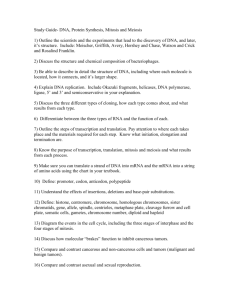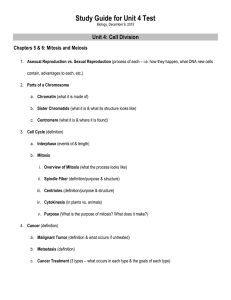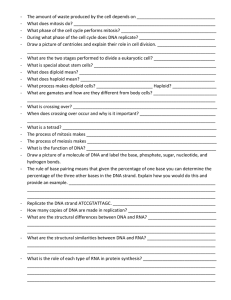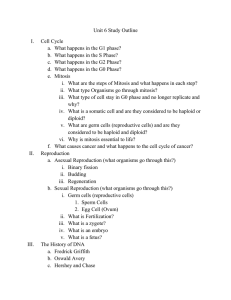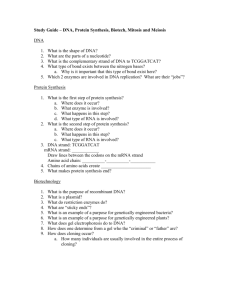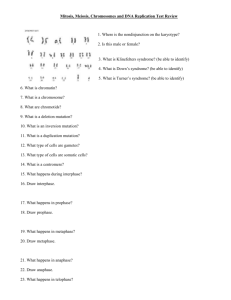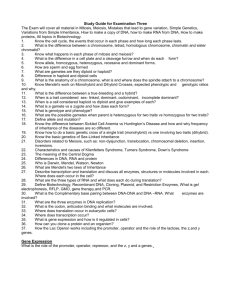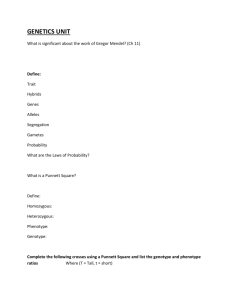Pre-AP 1st semester study guide
advertisement
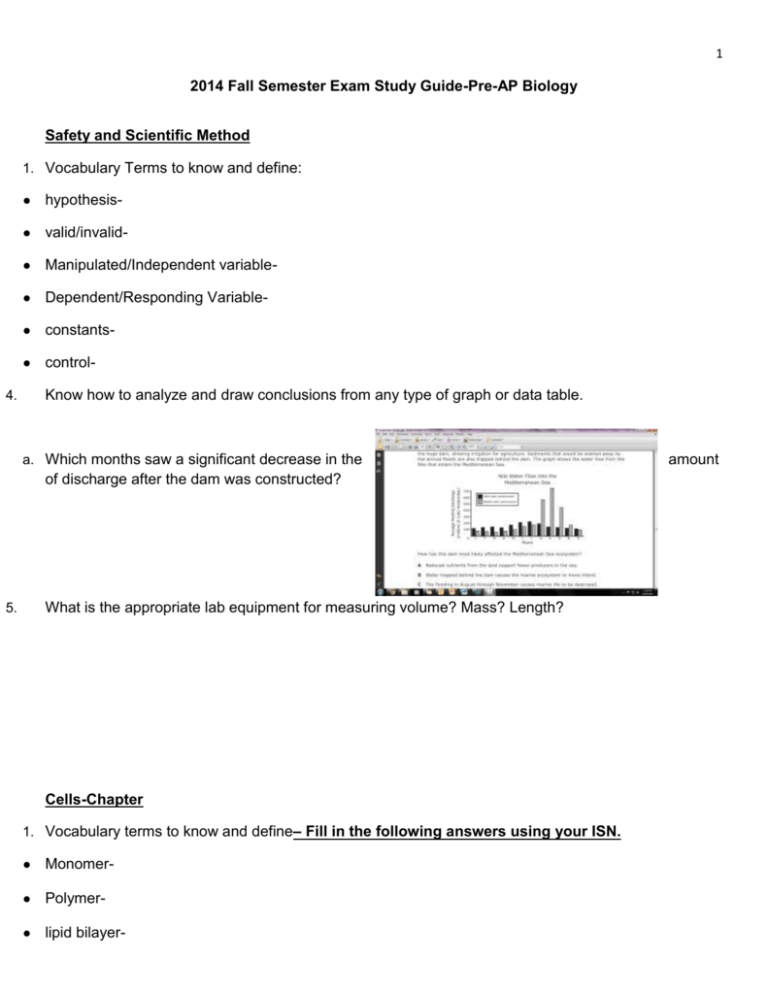
1 2014 Fall Semester Exam Study Guide-Pre-AP Biology Safety and Scientific Method 1. Vocabulary Terms to know and define: ● hypothesis- ● valid/invalid- ● Manipulated/Independent variable- ● Dependent/Responding Variable- ● constants- ● controlKnow how to analyze and draw conclusions from any type of graph or data table. 4. a. Which months saw a significant decrease in the of discharge after the dam was constructed? What is the appropriate lab equipment for measuring volume? Mass? Length? 5. Cells-Chapter 1. Vocabulary terms to know and define– Fill in the following answers using your ISN. ● Monomer- ● Polymer- ● lipid bilayer- amount 2 ● diffusion- ● osmosis- ● isotonic- ● hypertonic- ● hypotonic- ● eukaryotic ● prokaryotic 2. What is the function of the protein channel found in the cell membrane? 3. Which cell organelles are responsible for the energy conversion for the cell? Name and draw them (make sure you know where photosynthesis and cellular respiration take place). 4. Complete the table below using the scavenger hunt placed around the room. Protein Nucleic Acid Glucose No true Monomer 3 5. Complete the table below using the scavenger hunt placed around the room. Mitochondria Ribosome Chloroplast Endoplasmic Reticulum Nucleus Cell Membrane 6. Is energy (ATP) required during active transport? Passive transport? Facilitated diffusion? Do they need proteins? If so what kind? 7. Write out the balanced equation for photosynthesis. Label the reactants and the products. 8. Write out the balanced chemical equation for cellular respiration. Label the reactants and the products. Cell Division 1. Complete the following table: Mitosis Draw the Overview Rounds of cell division Meiosis 4 Parent cell- diploid (2n) or haploid(n)? # of daughter cells produced Daughter cells- diploid (2n) or haploid(n)? Type of cells produced (gametes or somatic cells) 2. If a cells diploid number is 68, what is its haploid number? 2. What happens during each of the sub-phases of interphase? G1 S G2 3. Mitosis: Draw, label, & describe each phase of mitosis: 4. Meiosis: Draw, label, & describe each phase of meiosis: 5. Why is crossing-over important? 6. When does crossing-over occur? 5 Nucleic Acids: 1. In the space below, draw a Venn diagram comparing and contrasting DNA and RNA Mutations: define the terms and give an example for each type of mutation (pg. 307) 1. Your original DNA: ATGCCGATTCCA 2. Point Mutations: a. Substitution- b. Frameshift Mutationsi. Insertion- ii. Deletion- 3. Which one would cause more damage a mutation at the beginning or at the end of the strand? Explain why ● ReplicationReplicate the following strand: AAGTGATAGCGC Write the sequence of DNA replication process using the web site from my web page. 6 Protein Synthesis: Define each vocabulary word below, explain what happens in each of the following processes and where in the cell each process occurs: DNA strand: AAGTGATAGCGC ● Transcription- Transcribe your newly created strand from above: ● Translation- Translate your mRNA from above: 1. Define the following terms and explain where you would find them: ● Codon/ triplet- ● Anticodon- 2. What is the nucleotide that is found in DNA? Draw and label it. 3. Know how to read the codon chart and wheel. Genetics: 1. Vocabulary terms to know and define: ● Alleles ● Dominant ● Recessive ● Phenotype ● Genotype ● Heterozygous/hybrid 7 ● Homozygous/purebred ● Incomplete Dominance ● Codominance ● P generation ● F1 generation ● F2 generation ● Sex linked punnett squares ● Probability (Know how to find phenotype ratios) 2. What is non-disjunction? 3. How do you know that non-disjunction has occurred? 4. Describe Cloning 5. Draw the gametes needed to produce a normal female. A normal male (make sure you include sperm and egg). 6. Match the following genetic disorders with the description: a. Down Syndrome ____ Monosomy 23 b. Hemophilia ____ Misshapen hemoglobin (red blood cells c. Sickle Cell Anemia ____ Trisomy 21 d. Turner Syndrome ____ Inability for blood to clot 7. Using the DNA Fingerprint below. Which pair of parents' DNA matched the soldier's DNA? How do you know? 8
